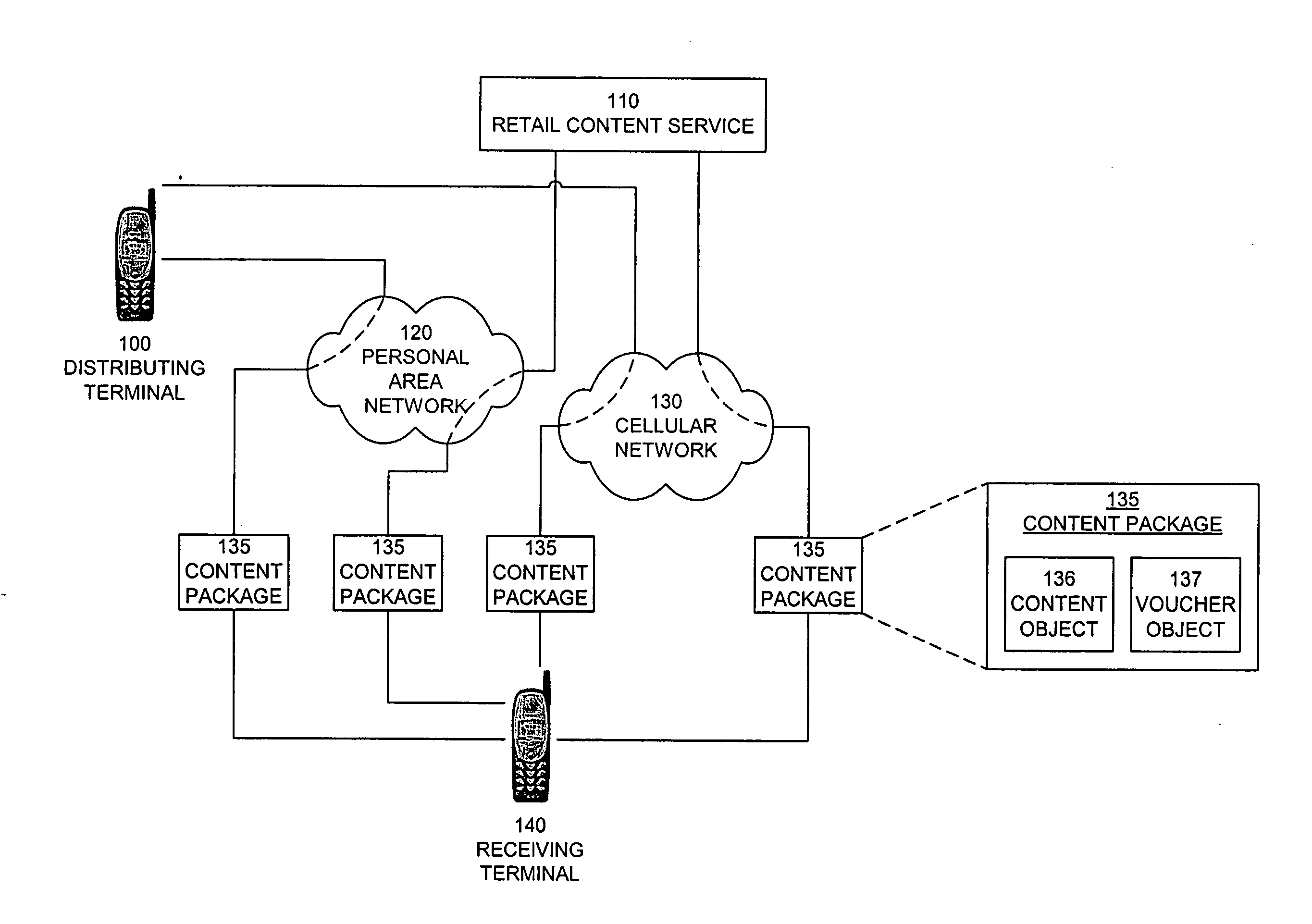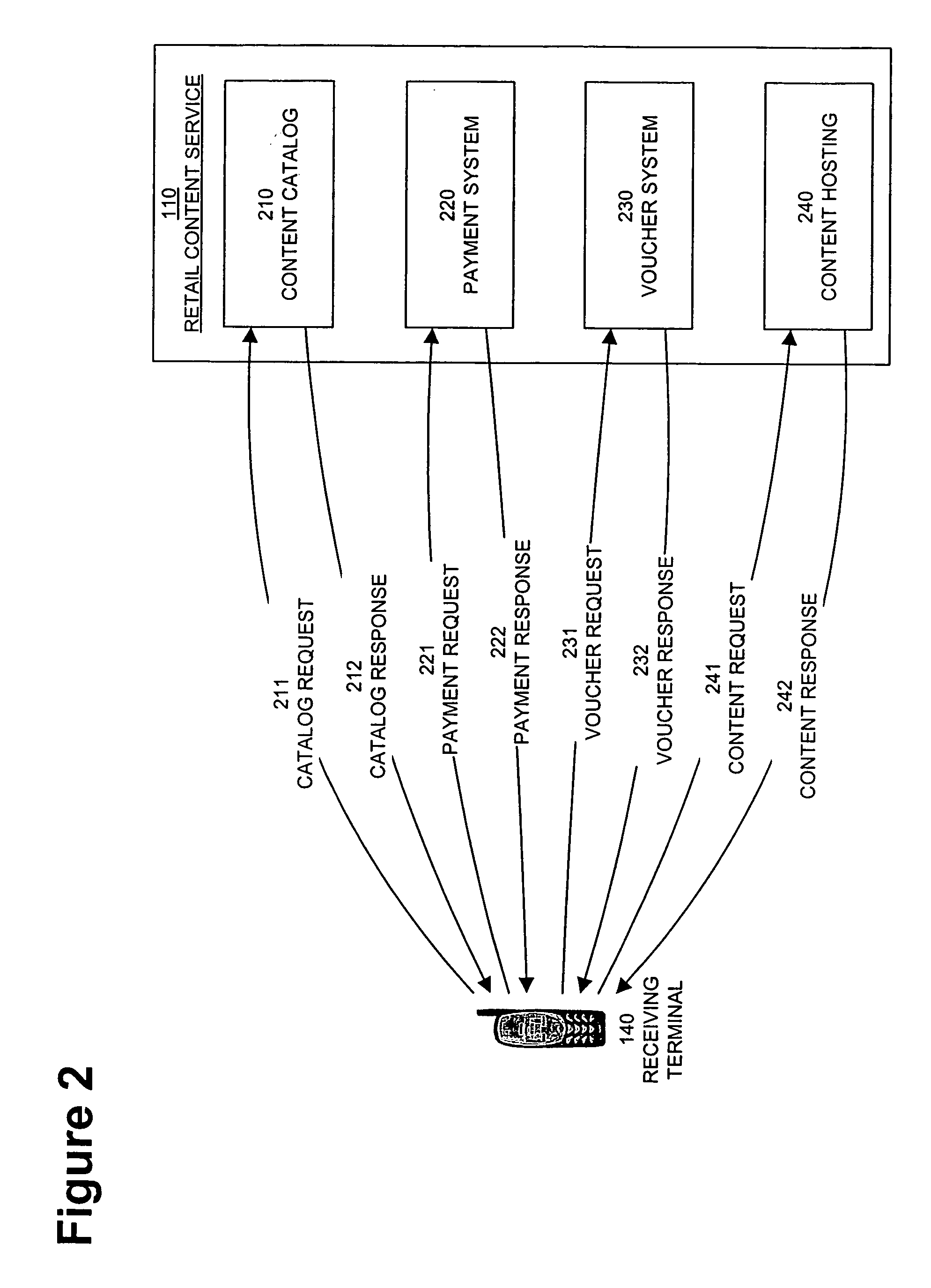Digital rights management in a mobile communications environment
a technology of digital rights management and mobile communications, applied in the field of digital rights management in a mobile communications environment, can solve the problems of pirated copies being less interesting, content producers are more likely to be exposed to risks, and pirated copies even more vulnerable to detection
- Summary
- Abstract
- Description
- Claims
- Application Information
AI Technical Summary
Benefits of technology
Problems solved by technology
Method used
Image
Examples
Embodiment Construction
Mobile Rights Voucher
[0078] The Mobile Rights Voucher disclosed herein manages the lifecycle of a piece of content and the associated property rights held by the creator or agent of the digital content. In addition, the Mobile Rights Voucher can facilitate flexible payment for content and can deliver the content separate from the voucher. The Mobile Rights Voucher is a message that can be sent by electronic mail, a Multimedia Messaging Service (MMS), or a Short Messaging Service (SMS). Alternatively, the Mobile Rights Voucher can be downloaded using a Wireless Application Protocol (WAP) or a Hypertext Transfer Protocol (HTTP).
[0079] Smart Content Object is a content encapsulation architecture that includes smart routing capabilities for content and can be useful for application routing. The Mobile Rights Voucher can use the Smart Content Object for expressing rights information. The Smart Content Object and Mobile Rights Voucher are both implemented on memory-limited devices such...
PUM
 Login to View More
Login to View More Abstract
Description
Claims
Application Information
 Login to View More
Login to View More - R&D
- Intellectual Property
- Life Sciences
- Materials
- Tech Scout
- Unparalleled Data Quality
- Higher Quality Content
- 60% Fewer Hallucinations
Browse by: Latest US Patents, China's latest patents, Technical Efficacy Thesaurus, Application Domain, Technology Topic, Popular Technical Reports.
© 2025 PatSnap. All rights reserved.Legal|Privacy policy|Modern Slavery Act Transparency Statement|Sitemap|About US| Contact US: help@patsnap.com



